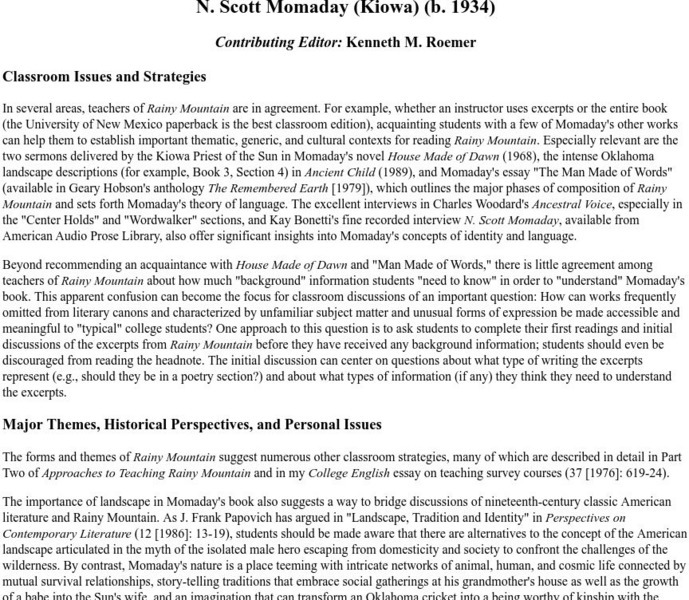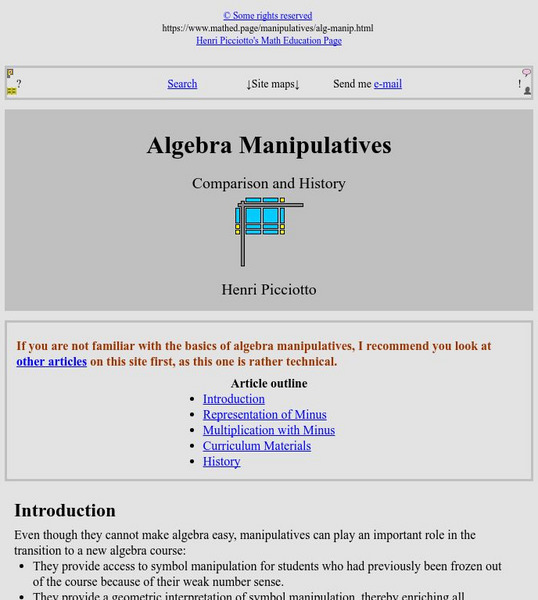Hi, what do you want to do?
Curated OER
Norse Mythology
Third graders read several selections of Norse mythology and compare this mythology to others studied in the past. They are introduced to runes. They read poetry and compile a class book of favorite poems. They define idioms and cite...
Curated OER
The Laundress
Learners explore the concept of work, and work typically assigned to women, through artwork depicting laundresses.
Curated OER
Discovering the Oasis
Fourth graders investigate riverbanks and oxbox ecosystem at the Truckee River. They observe the plants, animals, insects and water organisms located there. Students document water samples, flow and then categorize them in class. This...
Curated OER
Estimating the Live Mass of Dinosaurs
Students estimate the live mass of dinosaurs. Using dinosaur and modern animal models, students use simple displacement methods to calculate the volume of the models. They calculate the masses of each model. Students compare the...
Curated OER
What Do We Have In Common?
Seventh graders perform a dissection on a mussels and label their internal organs. In groups, they compare and contrast the mussels structure to those of human beings. They also review the functions that are necessary for survival and...
Curated OER
Investigating Soil
Fourth graders swap local soil samples with another school and examine the differences. They research soil properties, identify organisms that live in soil, create and maintain a biome of soil decomposition and design a poster to present...
Curated OER
The African-American Struggle for Equality in the World War II Era
Students respect and appreciate the challenges people faced during World War II. They develop the different perspectives on race during WWII. Students develop that the nation's actions may not exemplify a nation's stated ideals. Students...
Curated OER
Approaching the Iraq War
Students identify the justifications for the war in Iraq as seen from teh American and Middle Eastern perspectives. They research personal, primary and secondary sources to create a constructed poster board perspective. The poster board...
Curated OER
Women In The Labor Force Since 1920
Students investigate the historical perspective of how women were perceived in the labor force since 1920 forward. They conduct research that focuses on how the role of women has changed in different periods of time. They identify the...
Curated OER
Women in United States History
Students identify and explain the significance of key terms, such as: 19th Amendment, Femisnism, Flappers, Immigration and Jobs in Wisconsin. They identify and analyze viewpoints, events, social classes, and people of various years.
Curated OER
Children's Literature Across the Curriculum Ideas-Sahara, Vanishing Cultures
Students read Sahara, Vanishing Cultures by Jan Reynolds. They complete a variety of cross-curricular activities surrounding the study nomadic cultures. Included are reading, art, math, science, writing, social studies, and library...
Curated OER
Symmetry In Nature
Pupils investigate the symmetry that is found in nature. They view shapes and patterns in nature while looking at images. Students look for tessellations while obtaining photographs with a digital camera. The information is used for...
Curated OER
Region, History, and the Novel: Is Resistance Futile?
Students read a novel related to their geographical area and "Gone With The Wind". Using the first novel, they use the internet to research one aspect from it and relate it to their location today. They create a Hyperstudio or PowerPoint...
Curated OER
Making Formal Requests
High schoolers investigate the concept of making formal requests and examples are included in the lesson plan for teacher presentation. They practice using the phrases in a variety of situations and then make presentations for others to...
Curated OER
Shapes: Large or Small?
In this shape worksheet, students color large shapes of a set, and circle small shapes, 4 sets total. Worksheet is part of a site with links to additional activities.
Curated OER
Elements of a Short Story
Pupils analyze elements of a short story by working together. In this literature lesson, students analyze short stories. They use the TI Navigator Application to write their findings.
Curated OER
Study Guide for the 2009 Doris Conant Lecturer on Women and Culture: Barbara Ehrenreich
Students analyze the teachings of Barbara Ehrenreich about women and culture. In this women and culture lesson, students define "joy" and "collective joy." Students do field research on these topics and write a field report and a letter...
Curated OER
Deforestation
Students identify the different tropical rainforests in the world using a map. In this ecology lesson, students describe the different methods of deforestation. They create a memo and present it to class.
Other
Wisewire: Grade 7 Playlist: Historical and Literary Comparisons
Students will learn how to compare and contrast a fictional portrayal of a time, place, or character and a historical account of the same period as a means of understanding how authors of fiction use or alter history. Included are lesson...
Alabama Learning Exchange
Alex: A Comparison of Puritan Authors
Students in teacher-selected groups of two will create a presentation on Puritan authors using Google Docs. Student groups will compare authors Anne Bradstreet and Jonathon Edwards. Students will support their comparisons through...
Alabama Learning Exchange
Alex: A Comparison of Puritan Authors
This lesson plan is meant to directly follow "A Comparison of Puritan Authors and Their Viewpoints on God and the Devil." Students are introduced to the basic concept of Bloom's Taxonomy of Knowledge, and then asked to apply the taxonomy...
Other
Sas: Exploring Ways Authors Use Text Structures to Convey Meaning
In this lesson, students will explore ways authors use text structures to convey meaning through cause and effect, sequencing, comparison, and more.
Georgetown University
Georgetown University: N. Scott Momaday (Kiowa) (B. 1934)
A Georgetown professor's perspective on teaching Momaday's work, focusing on "Rainy Mountain." Offers insights on form/style/artistic conventions, and major themes/personal issues/historical perspectives.
Other
Mathedpage.org: Algebra Manipulatives: Comparison and History
This resource discusses the use of manipulatives in the study of Algebra. The author sees benefits in symbol manipulation to enrich understanding, in geometric interpretation strengthening the connection to other parts of mathematics,...




























